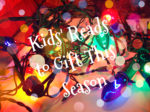Succeeding at the Piano
Recently, FJH Music Company released the first two levels of the new method Succeeding at the Piano, by Helen Marlais. The series is marketed as, “a comprehensive method that will establish a student’s musical foundation and love of piano playing. Note reading, intervallic reading, rhythm, technique, theory, and musicianship are consistently reinforced throughout.” I would add music history to that list as the these volumes feature pictures, melodies, and facts about Haydn, Mozart, Beethoven, Chopin, Brahms, and Schumann. (the action figures mentioned in a previous post might just be the perfect accoutrement)
As with many modern method series, the pieces in Succeeding at the Piano were written by a variety of respected composers who write superbly for young musicians. In addition to Helen Marlais, you will recognize many of the following names; Timothy Brown, Kevin Costley, Mary Leaf, Edwin McLean, and Kevin Olson.
An eclectic approach to reading was taken. Beginning in the Preparatory books, students are introduced first to the black then white keys, move on to the guide notes Middle C, Bass F, Middle C, then to Middle C Position, and finally to C Pentascale. These are not the only experiences in tonality however. Through the accompaniment parts, the beginning student also experiences the keys of F, G, and Gb major and c, d, and a minor. Reading is strengthened with the knowledge of basic intervals and how they look and sound.
In Grade 1, students move on to reading in G and D major. Other Grade 1 experiences in tonality include playing in all the above keys plus pentatonic scales, Mixolydian and Dorian modes, and a D pentascale with a lowered 2nd degree (sometimes called Arabic or Bulgarian and commonly used in Jazz). This grade also contains major/minor and tonic/dominant changes within single pieces.
Ms. Marlais, introduced form through melody, theme, and verse in the Preparatory books. In Grade 1, students will experience the forms A B, A B A, and A A1. Shapes are used to help the student understand the concepts. Boxes outline A and triangles are used for B. There is a bump out in the box to indicate A1. Form is reinforced in the theory book through a picture activity wherein the student is asked to circle a series pictures that depict each form. For example, the series of pictures beginning with a single penguin followed by a penguin on an ice block equal A A1 form.
Building a firm technical foundation was clearly an important goal of the author. Each unit has a technique lesson with exercises ala The Music Tree. However, here they are placed at the beginning of the unit rather than at the end.The concept of arm weight is introduced almost immediately and reinforced throughout both grades. Students begin with instruction in posture and seating and a natural rounded hand shape. Strong fingers, flexible wrist, arm weight, weight transfer, arm/wrist rotation, the “drip drop roll”, and multiple note slurs are all introduced in the Preparatory Grade and then strengthened in Grade 1.
In the Preparatory Grade there is an initial activity using fingers 2-3 in each hand. After that, the motions change to alternating hands and whole arm over the entire keyboard. Once the student has reached Middle C and C Positions, pieces are mostly grounded in a single hand position and a student experiences moves through 8va/15ma, tonic/dominant, position changes, and crossover motions. Students do continue to have the opportunity to move patterns over larger areas of the keyboard in technical exercises however.
Students are also free to move about when composing. Composition activities were structured to provide reinforcement for concepts while still allowing the student lots of creative freedom. In the Theory and Activity book for both grades, students compose, train their ears, and write and play. Notes, rhythms, terms and symbols, composers, and intervals are all reinforced. The activities are short and fun with the titles; Time to Compose, Follow the Leader, Parrot Play, Ear Training, Note Challenge, and Hall of Fame.
The pieces in the lesson and recital books are a mix of folk tunes, classical melodies, and character pieces. Students will enjoy them and enjoy the full sound they hear when the accompaniment is played by their teacher, a parent, or the provided recordings. At the end of each Recital Book, there is a page for the student to keep a record of the pieces they have performed. I like the fact that, in the Preparatory Grade, the author emphasizes that there are many ways to have a recital including in class, for the family, for friends and for stuffed animals or dolls. I wish that this was restated in Grade 1 since a transfer student might not have had the benefit of the earlier book.
I do take issue with the ever present words. I understand that some children love to sing along but others are not motivated in this way. I wish that only half of the pieces had words and I would like chances for the student to write their own title or words occasionally. Words limit the ages with which this series can be used.
One of my teaching positions is with a program which provides free class lessons for families who cannot afford them. Because students are, by necessity, grouped by level, there are mixed ages in all the classes. This year, in one of my beginning classes, the ages ranged from 8 – 13. I absolutely could not have sold Fairies at Sunset (complete with shimmering wings and twinkling lights) to the oldest two boys even with Shakespeare’s and Mendelssohn’s help!
Words can also create conflicted responses that get in the way of the purpose of a teaching piece. For example, in nearly every method there are pieces about walking to school, school busses, lunch boxes, etc (and this series is no exception). About half of my students are home schooled. They feel left out or simply don’t connect with these pieces even when we create our own words about school.
I am also bothered by the total lack of opportunity to vary the repertoire. There are simply no opportunities in the teaching pieces for the student to transpose, create variations, play as a canon, or play the accompaniment for a student or teacher melody. I miss these types of challenge activities. It is left totally up to each teacher to create such experiences for the student. This is good and bad. The teacher is free to individualize the method for each student, but on the other hand, a less experienced teacher will appreciate suggestions from the authors about the possibilities in each piece.
Overall, this is a solid method series which will succeed with parents, students, and teachers alike! The volumes come with CDs of all the pieces. In addition to helping the student understand how a piece should sound, these recordings can also be used creatively by the teacher to reinforce rhythm and ear training. Pieces are repeated twice (at practice then performance speeds) with verbal reminders between each. The performances are accompanied by piano and by string quartet. Midi tracks are also available for download.
Supplementary materials by Ms. Marlais include, stickers, student assignment book, Flash Card Friends, Christmas books, and the CDs Real Music for Kids and More Real Music for Kids.


